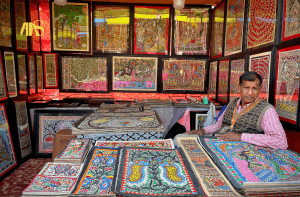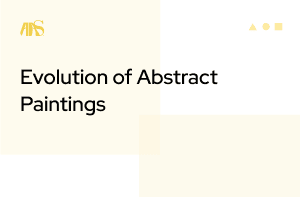Warli art, a vibrant and ancient tribal art form, has captured the imagination of art enthusiasts worldwide.
In this comprehensive guide, we’ll explore the origins, history, and contemporary relevance of Warli art, including the latest traditional folk art paintings available online in 2020.
What is Warli Art?
Warli art is a traditional folk art form originating from the Warli tribe of Maharashtra, India. Known for its simplicity and geometric precision, Warli paintings typically feature stick-like human figures engaged in everyday activities, rituals, and celebrations.
Key characteristics of Warli art include:
- Use of basic geometric shapes: circles, triangles, and squares
- White pigment on earthen-colored background
- Depiction of nature, animals, and human activities
- Storytelling through visual narratives
Origin and History of Warli Art
Ancient Roots
The origins of Warli art can be traced back to 2500-3000 BCE, making it one of the oldest art forms in India. The Warli tribe, primarily found in the Thane and Nashik districts of Maharashtra, has preserved this artistic tradition for millennia.
Cultural Significance
Warli paintings were traditionally created for ritual purposes, adorning the walls of tribal homes during harvests, weddings, and other significant events. The art form served as a means of passing down knowledge, myths, and cultural practices from one generation to the next.
Evolution Through Time
While the core elements of Warli art have remained consistent, the art form has evolved over time:
- Pre-1970s: Warli art was largely unknown outside the tribal communities
- 1970s: Artist Jivya Soma Mashe brought Warli art to mainstream attention
- 1980s-1990s: Increased recognition and commercialization of Warli art
- 2000s-present: Global appreciation and adaptation of Warli art in various mediums
Techniques and Materials
Traditional Warli art is created using simple materials and techniques:
- Background: A mixture of red mud and cow dung applied to walls or cloth
- Paint: White pigment made from a mixture of rice paste and water
- Brush: Bamboo sticks chewed at one end to create bristles
Modern artists often adapt these techniques, using acrylic paints on canvas or other surfaces while maintaining the traditional aesthetic.
Symbolism in Warli Art
Warli paintings are rich in symbolism, reflecting the tribe’s deep connection with nature and their spiritual beliefs:
- Circle: Represents the sun and moon
- Triangle: Symbolizes mountains and trees
- Square: Depicts a sacred enclosure or piece of land
- Human figures: Shown with triangular bodies and circular heads
Contemporary Relevance of Warli Art
In recent years, Warli art has experienced a renaissance, gaining popularity beyond its traditional contexts:
- Fashion: Warli-inspired prints on clothing and accessories
- Interior design: Wall murals and home decor items featuring Warli motifs
- Corporate branding: Companies incorporating Warli elements in logos and marketing materials
- Digital art: Warli-inspired designs in graphic art and animations
Latest Traditional Folk Art Paintings Online 2020
The year 2020 saw a surge in online interest for traditional folk art, including Warli paintings. Here are some trends and notable examples:
1. Eco-friendly Warli Art
Artists like Kusum Dhutia create Warli paintings using natural, sustainable materials, appealing to environmentally conscious collectors.
2. Contemporary Themes in Warli Style
Many artists are adapting Warli techniques to depict modern life and global issues. For example, some 2020 paintings featured figures wearing masks or practicing social distancing.
3. Fusion Warli Art
Artists are combining Warli art with other Indian folk art styles, creating unique hybrid pieces. The Indian Art Ideas platform showcases several examples of these innovative works.
4. Digital Warli Creations
With the rise of digital platforms, many artists are creating Warli-inspired digital art.
5. Large-scale Warli Installations
While not typically available online, 2020 saw several notable large-scale Warli installations in public spaces, bringing this traditional art form to wider audiences.
Preserving and Promoting Warli Art
As Warli art gains global recognition, efforts are being made to preserve its authenticity and support the tribal communities:
- Government initiatives to protect and promote Warli art as a cultural heritage
- NGOs working with Warli artists to provide fair trade opportunities
- Art education programs introducing Warli techniques to new generations
The Future of Warli Art
As we move beyond 2020, Warli art continues to evolve while maintaining its core identity. Emerging trends include:
- Integration of Warli elements in augmented reality (AR) experiences
- Collaborative projects between Warli artists and contemporary artists from other disciplines
- Increased focus on the storytelling aspects of Warli art in digital media
Conclusion
Warli art, with its rich history and enduring appeal, stands as a testament to the power of traditional folk art in the modern world.
From its ancient tribal roots to its contemporary interpretations, Warli art continues to captivate audiences with its simplicity, symbolism, and storytelling prowess.
Whether you’re an art collector, a cultural enthusiast, or simply someone who appreciates beautiful craftsmanship, exploring the world of Warli art offers a unique window into India’s artistic heritage.
As we embrace the digital age, the availability of Warli art online ensures that this timeless tradition can be appreciated and preserved for generations to come.





